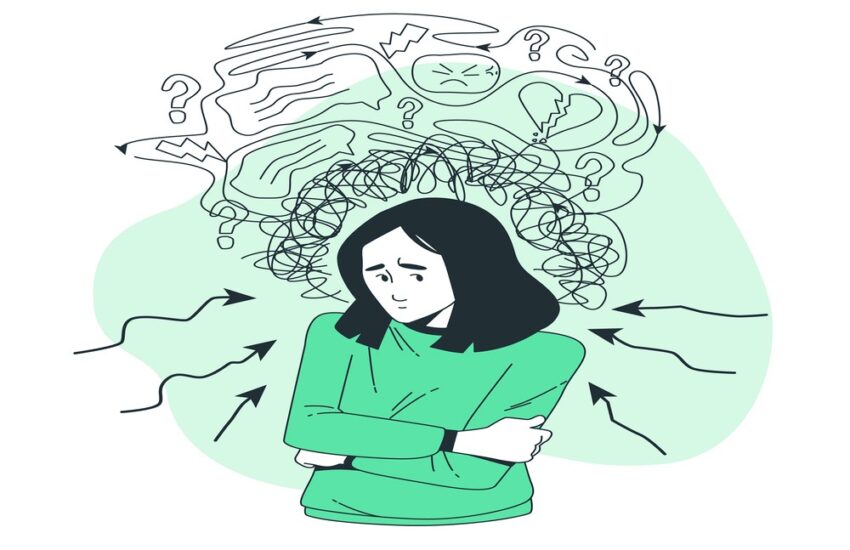Our ideas typically happen on autopilot. This is helpful for carrying out daily chores including eating, getting dressed, and cleaning your teeth.
However, since we do not pay much attention to it, the fact that it is automatic and habitual can be detrimental.
Understanding how automatic negative ideas arise and how they impact us can help us be ready to challenge them.
Negative thoughts are automatic
Automatic negative thoughts (ANTs) are unfavourable thoughts that come to mind automatically. They are uncontrollable reactions to specific circumstances that are rooted in your fundamental ideas about the world, other people, or yourself.
Self-doubt, rage, irritation, melancholy, and anxiety are all possible effects of ANTs. They have a significant impact on how we feel, and whether we accept or reject them will determine how pleasant our lives may be.
Direct control of these spontaneous ideas is not possible. However, you can indirectly change your beliefs for the better.
It’s critical to understand that any uncontrollable unpleasant thoughts are:
● always unfavourable
● You start to feel sorry for yourself.
● likely to be self-destructive and prevent you from taking care of yourself
● When you least expect it, people judge you without your permission.
● Because you are mired in a negative thought cycle, it is plausible.
● Because you have a skewed vision of reality, you are biased.
Why do have negative thoughts
Daily having both good and negative ideas is entirely normal. So, you don’t need to worry, it’s okay to think negatively. It’s an evolutionary trait to think negatively to keep you safe. It is intended to spot hazards, absorb lessons from errors, and find solutions.
Most thoughts—90% of them—are repeated. And when anything is repeated enough times, a neural pathway is formed in the brain. Thus, if you have negative ideas often enough, they will eventually become habitual.
Effects of negative thoughts
It’s normal to think negatively; it serves as a protective mechanism. However, your brain will remember a bad event if you have one.
The next time you go through a similar encounter, your brain sets off a reaction because it perceives a threat. You experience this unpleasant reaction as agitation, anger, depression, or even anxiety.
It may set off a downward spiral that results in a revolving door of unfavourable feelings, thoughts, and actions. Fortunately, there is a straightforward six-step procedure for combating automatic negative thinking.
How to deal with negative thoughts
1. Recognize and isolate the thoughts
When you have an uncontrollable negative thought:
● Pause for a second
● Recognize when what you are thinking is incorrect.
● isolate and concentrate on that absurd idea
● to be aware of your feelings
2. Write down your thoughts
You can process your feelings and thoughts through writing by:
● letting all of your feelings and thoughts out
● enabling you to process your emotions with clarity and focus
● establishing constructive mental discourse with yourself
● decreasing anxiety and fostering thankfulness
3. Determine the level of distress
Determine the level of distress your automatic thoughts cause you to experience. This will enable you to gauge how much harm the negative thinking is doing to you. There are ten levels of distress, ranging from 0 to 10. Zero means that you are completely at ease and unruffled. A distress level of ten indicates absolute and paralysing distress.
Consider your feelings, your emotions, and any possible bodily suffering when you assign a distress level.
4. Pick out the cognitive distortion
Common thought processes called cognitive distortions can lead to unreasonable negative ideas and sentiments. These limiting thought patterns lead to an erroneous distortion of reality perception. The majority of people will encounter 15 typical cognitive distortions. Different ways that these types of faulty thinking have an impact on our thoughts. Find the cognitive distortion that corresponds to your pessimistic automatic thinking by going through the list of cognitive distortions. To ensure you have a copy on hand for when you need it, I advise printing it off.
5. Dispute & Reframe Negative Thoughts
By weighing the evidence, concentrating on the positive, and avoiding excessive thinking, one can challenge cognitive biases. To overcome negative thinking, each of the distorted thought patterns necessitates a different approach.
● You can get rid of unfavourable ideas by
● battling and disproving bad ideas
● changing the way, we speak and think to ourselves
● replacing harmful distortions with wholesome, pleasant ideas
● Noting the revised, more logical thought
6. Revaluate the level of distress
Reassess the amount of distress to determine whether this practise has been successful after challenging and reframing the mistaken thought. After the practise, if your degree of distress has lessened and you are feeling more emotionally and physically at ease, you have successfully changed your negative idea. You can do the activity again if you don’t think your skewed thought has been addressed. Even while you might not always be able to change your style of thinking, with experience you will be able to automatically spot the negative thought traps and switch to a positive frame of mind.
Start challenging your habitual negative thinking by printing off a free copy of the worksheet at the conclusion of the article.
If you’re looking for a “Psychologist near me” or “Best psychiatrist near me”, visit TalktoAngel, a platform that connects you to the best online mental health counselors.
